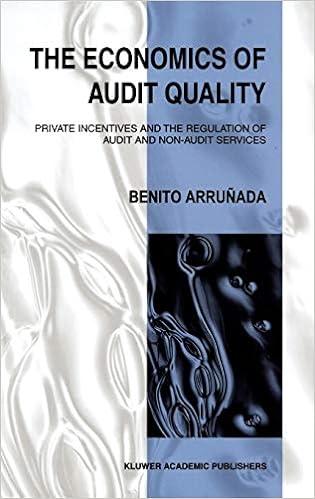Answered step by step
Verified Expert Solution
Question
1 Approved Answer
provide reason Problem #17 Consider two factors of production: capital and labor. Assume that capital can earn wK=1 if it chooses to work on its

provide reason
Problem \#17 Consider two factors of production: capital and labor. Assume that capital can earn wK=1 if it chooses to work on its own and that labor can earn wL=E1 on its own if it stays in autarky. Let the total supply of labor be equal to L. Furthermore, assume that a unit of capital and a unit of labor can form a joint unit and produce y units of output together. Assume that the surplus - if any - generated in the joint sector is shared between the two factors. Assume that capital receives fraction 21 of the surplus. Now, assume that capital becomes specific to a given relationship if it chooses to form a joint unit. Moreover, assume that capital loses completely its outside option if it forms a joint unit. How does an increase of impact the well being of capital? a) positively b) negatively c) it is neutral d) negatively if is initially close to 21 C Problem \#18 Consider two factors of production: capital and labor. Assume that capital can earn wK=1 if it chooses to work on its own and that labor can earn wL=E1 on its own if it stays in autarky. Let the total supply of labor be equal to L. Furthermore, assume that a unit of capital and a unit of labor can form a joint unit and produce y units of output together. Assume that the surplus - if any - generated in the joint sector is shared between the two factors. Assume that capital receives fraction 21 of the surplus. Now, assume that capital becomes specific to a given relationship if it chooses to form a joint unit. Moreover, assume that capital loses completely its outside option if it forms a joint unit. How does an increase in y impact the level of unemployment? a) It does not affect it b) It leads to an increase c) It leads to a reduction d) It leads to a reduction of is close to 21 Problem \#17 Consider two factors of production: capital and labor. Assume that capital can earn wK=1 if it chooses to work on its own and that labor can earn wL=E1 on its own if it stays in autarky. Let the total supply of labor be equal to L. Furthermore, assume that a unit of capital and a unit of labor can form a joint unit and produce y units of output together. Assume that the surplus - if any - generated in the joint sector is shared between the two factors. Assume that capital receives fraction 21 of the surplus. Now, assume that capital becomes specific to a given relationship if it chooses to form a joint unit. Moreover, assume that capital loses completely its outside option if it forms a joint unit. How does an increase of impact the well being of capital? a) positively b) negatively c) it is neutral d) negatively if is initially close to 21 C Problem \#18 Consider two factors of production: capital and labor. Assume that capital can earn wK=1 if it chooses to work on its own and that labor can earn wL=E1 on its own if it stays in autarky. Let the total supply of labor be equal to L. Furthermore, assume that a unit of capital and a unit of labor can form a joint unit and produce y units of output together. Assume that the surplus - if any - generated in the joint sector is shared between the two factors. Assume that capital receives fraction 21 of the surplus. Now, assume that capital becomes specific to a given relationship if it chooses to form a joint unit. Moreover, assume that capital loses completely its outside option if it forms a joint unit. How does an increase in y impact the level of unemployment? a) It does not affect it b) It leads to an increase c) It leads to a reduction d) It leads to a reduction of is close to 21Step by Step Solution
There are 3 Steps involved in it
Step: 1

Get Instant Access to Expert-Tailored Solutions
See step-by-step solutions with expert insights and AI powered tools for academic success
Step: 2

Step: 3

Ace Your Homework with AI
Get the answers you need in no time with our AI-driven, step-by-step assistance
Get Started


